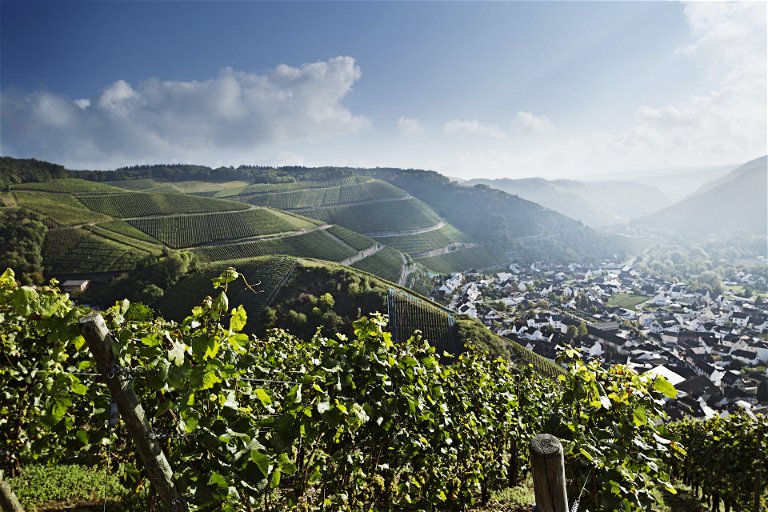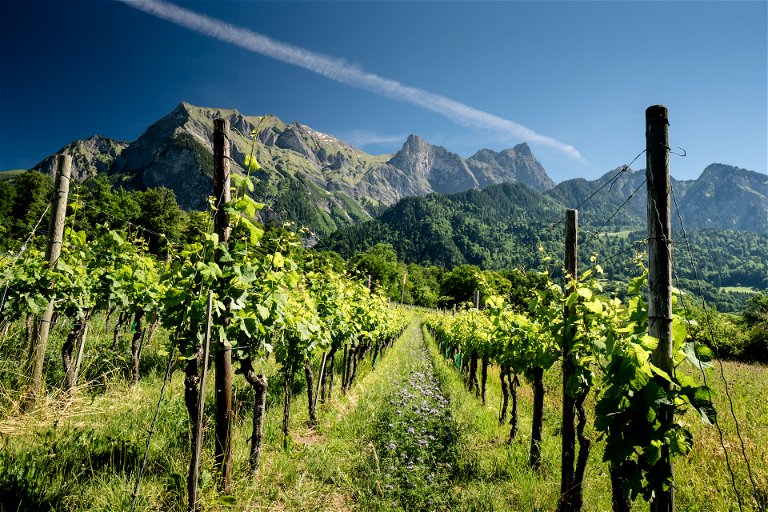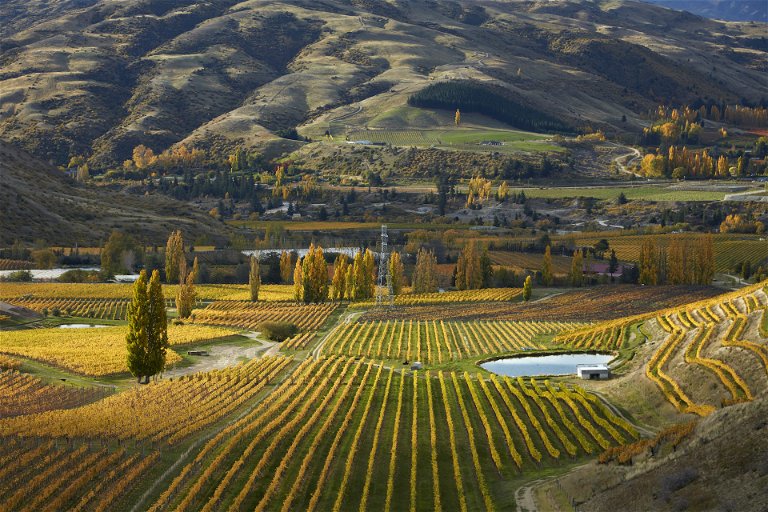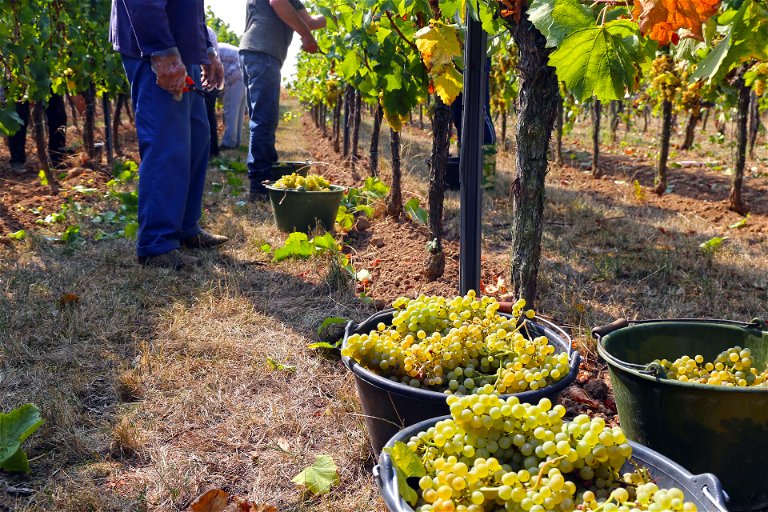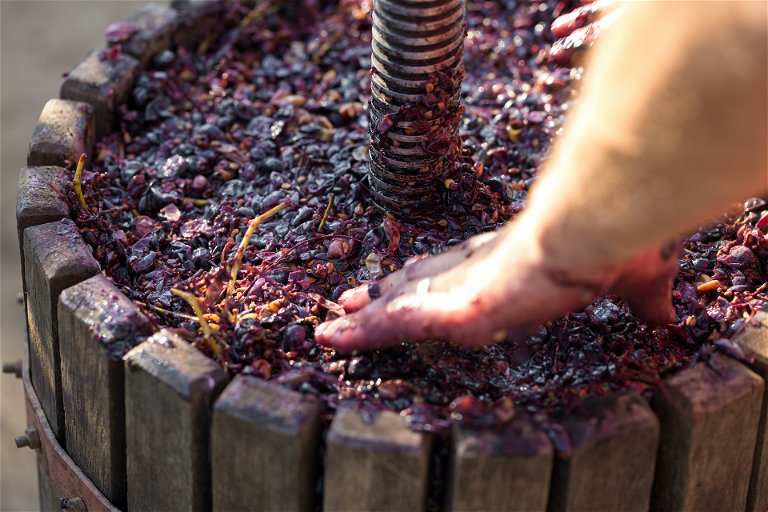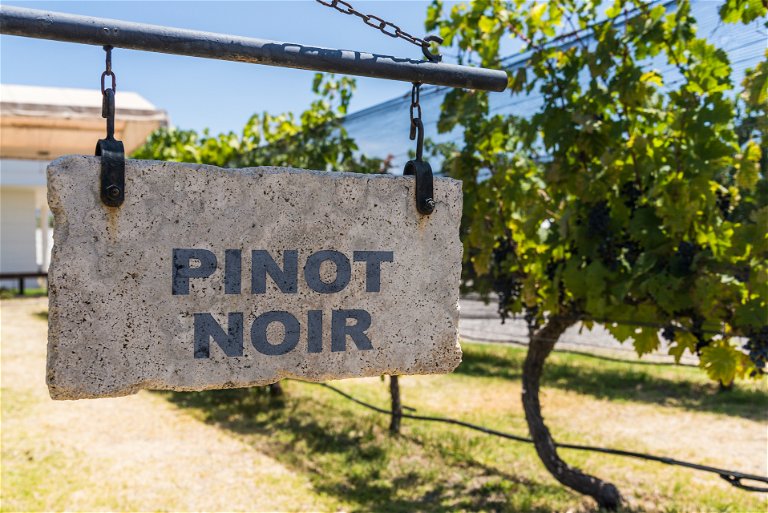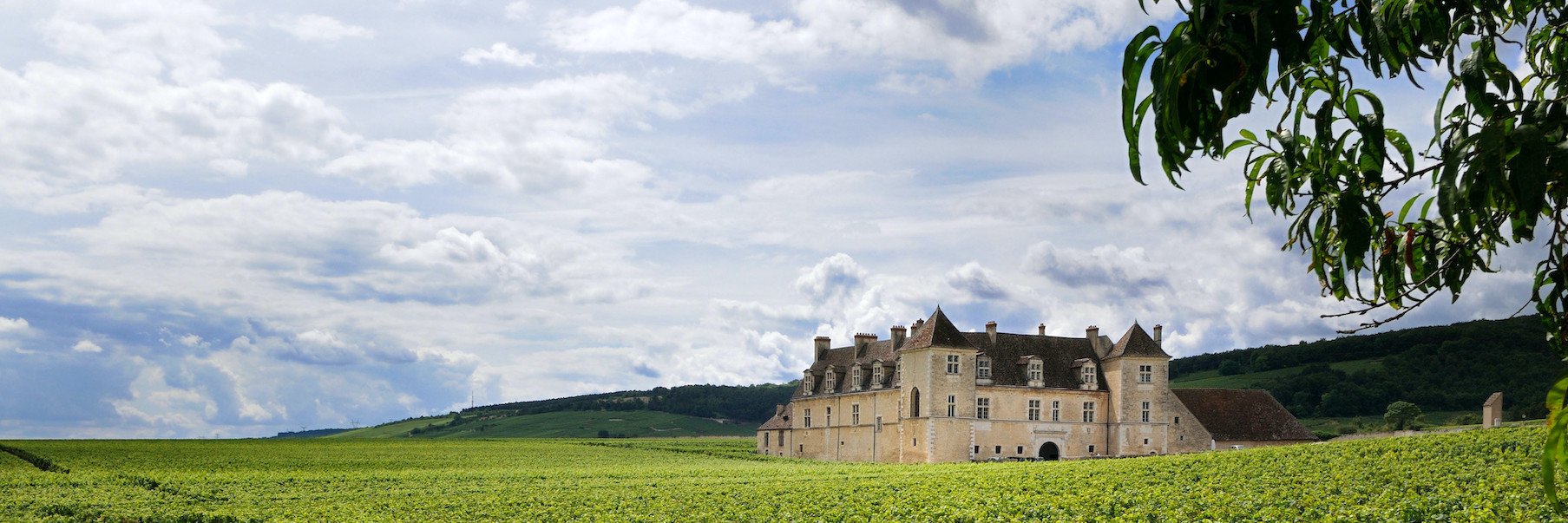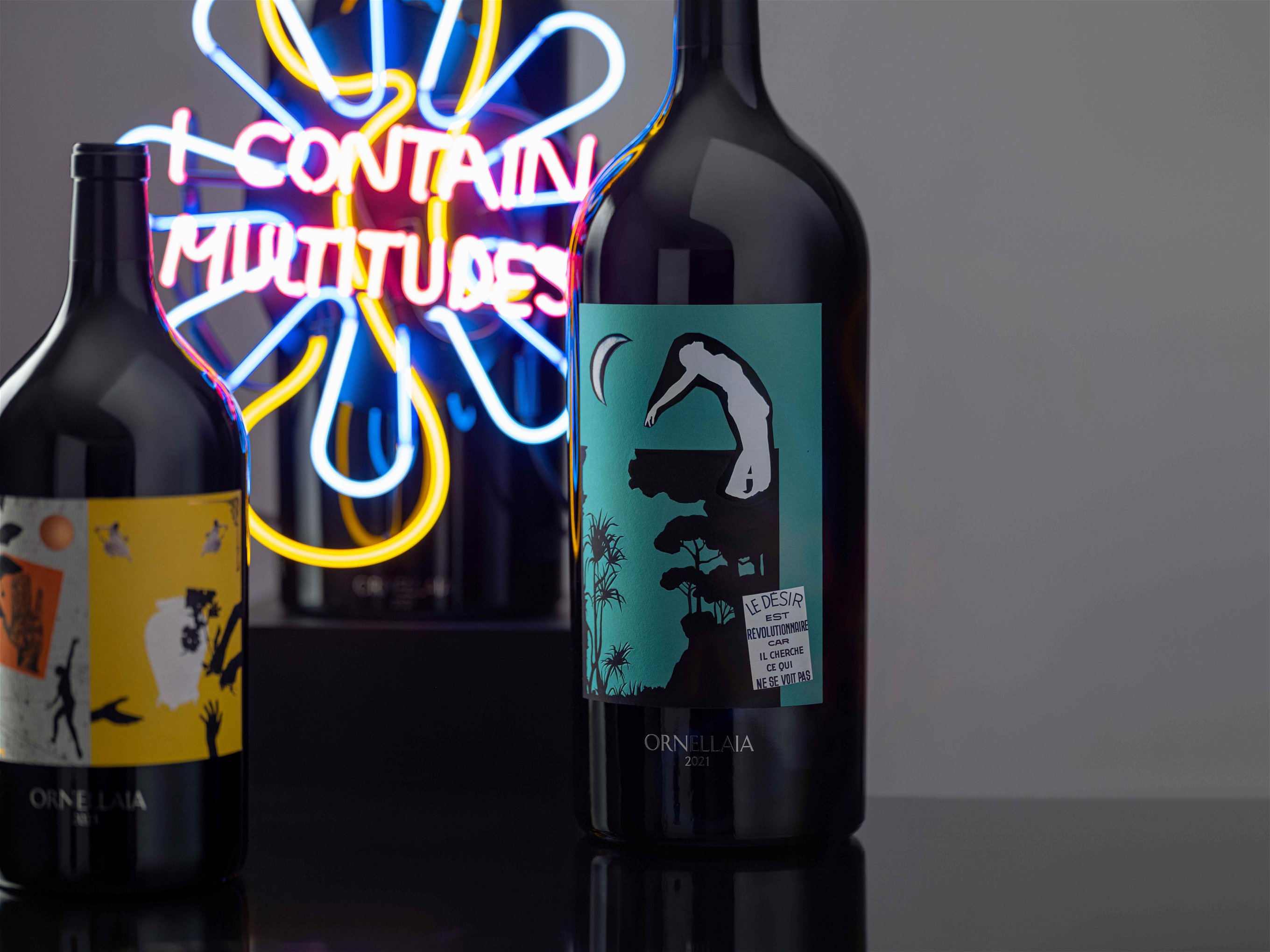Why the World Loves Pinot Noir
Falstaff traces the obsession that is Pinot Noir around the world, from Alsace to Argentina and California to Chile.
Pinot Noir is a global phenomenon: it grows on every continent and shimmers with its indelible sense of 'Pinot-ness' in many guises. On all manner of soils, on ancient vineyards or virgin land, coastal or continental – it has an extraordinary hold over those who grow, make and drink it.
It comes with more magic and mysticism than all other grapes put together. Pinotphiles have long admitted defeat in the face of this ancient grape: once smitten, we just continue searching for that haunting scent which carries so much more than just fruit. There is something primordial and visceral in Pinot Noir's perfume, something earthy and eternal, something that encapsulates both life and death in its autumnal shades of decay.
It can be a floral cloud of hawthorn blossom and tart, red fruit; often it is a deeply infused sense of soil with dimensions of tea leaf, rock and forest; In its maturity it becomes a metaphor for dimming light, spent foliage and fading voluptuousness.
Pinot Noir is also the ultimate challenge: it is the red grape that proves a point in the cool sites of England and the windswept wilds of Patagonia. It defies Pacific fog and Arctic winds. Yet in other places it speaks of sumptuous sunshine, of eucalypt and conifer, of cooling limestone and smoky slate. It makes its very own, constantly shifting map of the wine world and we are here to trace it.
A genealogy
The origins of Pinot Noir are lost in the mists of time. It is one of the world's oldest grape varieties - supposedly Pinot and its ancestors have been around for 2,000 years.
While Pinot is a parent to many grape varieties via natural crossings, nobody can trace Pinot's own parents. Early mentions of it under the names of Noirien, Auvernat and Morillon and go back to the 13th century. Robinson, Harding and Vouillamos in their ground-breaking tome Wine Grapes attest that "Pinot Noir was already considered to be a variety of utmost quality in the Middle Ages."
It is its unparalleled continuity of cultivation in Burgundy that explains why Pinot Noir and site-specific viticulture are inseparable. Pinot Noir is distinguished by its thin grape skins. This makes it rather susceptible to rot but it also explains the wine: it has nuance and is never heavily tannic.
Pinot Noir loves temperate regions: warm soils with sunny but not hot days. It can and does thrive in marginal climates and it has found convincing homes around the globe wherever these conditions are met.
Burgundy: The Cradle
Burgundy is the blueprint and Pinot Noir is the medium: wherever anyone makes site-specific, single-varietal wine, they are channeling what happened in northeastern France hundreds of years ago on a ridge of Jurassic limestone called Côte d'Or, or Golden Slope. Records of named vineyards begin in the 7th century – 1,300 years ago. Feudal lords endowed churches like Notre Dame de Bèze and the Abbey of Saint-Vivant with vineyards and land for the planting of vines. Monastic communities did most of the work. Imagine a life without electricity, with few creature comforts, with days measured in canonical hours. Imagine a life where tending vines and making wine is as much an act of devotion as it is work - and imagine the acute sensibilities of the sisters and brothers to their surroundings.
They were attuned to the slightest differences in soil and aspect of each hillside - and their wines bore these differences out. Initially, the wines were likely made from field blends. Over the centuries, the vineyards were delineated into hundreds of individually named climats, or parcels, and one grape stood out for its quality: Pinot Noir. But it needed much care and did not produce large yields. The cultivation of Pinot Noir thus remained for centuries in the hands of religious or aristocratic estates who had the means to care for it: feudal and religious structures ensured its development as a quality variety at a time when most viticulture was based on field blends of various grape varieties.
This is why Burgundy is where quality viticulture was born. This era only came to an end with the French Revolution in 1789 – by which time Pinot Noir's quality was undoubted and the vineyards in the Côte d'Or were famous. Today, these ancient vineyards between the towns of Dijon and Beaune are recognised by UNESCO world heritage, their outlines mapped and enshrined in law.
Burgundy's wines are still the most famous, expensive and sought-after Pinot Noirs in the world. Some are made in minute quantities from vineyards classified into grands crus and premiers crus. Trying to list the best of them would be folly: too many are outstanding and poetic. They are made in a wide array of styles. Almost everyone who makes wine anywhere in the world passes through Burgundy - to visit, learn, study, taste or work – because it is the place where it all began.
France: Loire Valley
France has further outposts of Pinot Noir: both can trace their existence to monastic origins and both have come into their own with climate change. The first one is in the Loire valley in an appellation today famous for its white wines including Sancerre. In fact, Pinot Noir used to be Sancerre's mainstay long before Sauvignon Blanc became its calling card.
In the cool 20th century, much of Sancerre's Pinot Noir was turned into rosé wines but climate change has turned its fortunes. The wines come with red-fruited elegance and much fragrance – often with that tell-tale conifer scent of the Loire. Pinot Noir is now also planted further afield, around Montlouis and even beyond Nantes towards the Atlantic and sold as IGP Vin de Loire - these are slender, tender reds that take well to being chilled.
Best of Loire
92 THIBAULT DENIZOT BIORGA BEAUX REGARDS 2019, SANCERRE
92 CHÂTEAU DE SANCERRE TERRE DE CHAILLOUX 2016, SANCERRE
91 SAYS LA PERRIÈRE DOMAINE DE TERRES BLANCHES SANCERRE LA LOUISONNE 2015, SANCERRE
90 DENIS BARDON PINOT NOIR LAFOLLIE 2020, IGP LOIRE
90 DONATIA BAHUAUD PINOT NOIR NO. 7 2019, SANCERRE
Alsace: The Revival
Alsace can also trace its Pinot Noir history back to early monastic settlements. Its Pinot Noirs once were prized wines - but that glory is only just being revived. Alsace has made giant strides in Pinot Noir over the past two decades. Lovers of Alsace wines will know that Pinot Noir is still not a permitted grape variety for grands crus – despite the fact that applications for the admission of Pinot Noir in the grands crus of Vorbourg, Hengst and Kirchberg de Barr have been lodged with the authorities for a while. This means that for most of the 20th century, Pinot Noir was not planted in the best sites and most of the fruit went into the production of Crémant d'Alsace, the region's traditional method of sparkling wine.
The red wines that were made never gained much esteem. This, however, has changed fundamentally. Climate change is a key factor, but also a re-assessment of which grapes really express the soils of Alsace. Eddy Faller of Domaine Weinbach in Kayserberg also notes that the mindset of producers changed: “Making great Pinot Noir means investment: in planting, farming and winemaking gear that most winemakers in Alsace were not ready to risk.
When Burgundy prices started to soar, it also created more breathing space for prices of Alsace Pinot Noir. This helped to convince producers. "Today, Alsace is a fascinating hunting ground for fine Pinot Noir: limestone, sandstone and granitic soils bring forth complex wines that are still below the radar. They lack nothing in complexity or finesse.
Germany: Red Revolution
The modern Pinot Noir wave in Germany started earlier than that of Alsace. Why? Because German wines were in dire straits in the 1980s and it was then that a few pioneering producers started questioning perceived wisdom. After all, Pinot Noir – or Spätburgunder as the grape is called in Germany – had long been present in the country. But for centuries Germany's winelands had been too war-ravaged to build anything but a local reputation for their wines – or to leave documentation that could piece together a continuous history.
While small pockets in the Rheingau, Franconia, Baden and Rheinhessen have some Pinot history, producers recognized that soil and climate were eminently suited to the growing of quality Pinot Noir. These 1980s and 1990s trailblazers kept looking over their shoulders to Burgundy, taking vital cues from there - and success followed. Today, their children are honing what shapes up to be an essentially German style of Pinot Noir. The focus is on soil and site, the reliance on oak or extraction is gone.
Elegance is the new name of the game. Pinot lovers will find unique expressions of the grape across the four latitudes of Germany's thirteen regions. Pinot Noir thrives on sandstone, schist, slate, rhyolite, basalt, limestone…giving thrilling new expressions to the grape. What Germany has achieved with Pinot Noir over the past 30 years is nothing short of miraculous. Today it makes some of the most exciting Pinot Noirs in the world.
Best of Alsace
96 VALENTIN ZUSSLIN BOLLENBERG LUFT PINOT NOIR 2017
96 DOMAINE WEINBACH ALTENBOURG PINOT NOIR 2019
96 ALBERT MANN LES SAINTES CLAIRES PINOT NOIR 2019
95 DOMAINE MURÉ PINOT NOIR CLOS SAINT LANDELIN 2013
95 ZIND HUMBRECHT PINOT NOIR HEIMBOURG 2019
95 MARCEL DEISS BURLENBERG PINOT NOIR 2017
95 BARMÈS BOOKS PINOT NOIR VIEILLES VIGNES 2019
94 HENRY FUCHS PINOT NOIR ROUGE COMME RENARD 2019
94 ÉMILE BEYER PINOT NOIR LIEU-DIT SUNDEL 2015
94 BOECKEL PINOT NOIR OBER-PFOELLER 2019
Switzerland, Austria and Italy: Alpine Accents
Why lump these three countries together? Because in the furthest sense, they can be grouped as "Alpine-influenced" Pinot Noirs. It is the canton of Graubünden that is Switzerland's Pinot Noir stronghold, while Trentino and Alto Adige in Italy's alpine and mountainous north are home to compelling Pinot Noirs. In Austria the little Pinot Noir there is reaches its greatest heights in the zone of Thermenregion - even though the alpine influence is less felt there. All three countries produce beautiful and noteworthy Pinot Noirs.
California: Coastal Sweep
California alone holds a whole cosmos of Pinot Noir: a full scale of expressions, all informed to a larger or lesser degree by the influence of the cold Pacific. Pinot is grown along almost all of California's sprawling coastline: from Santa Barbara in the south to Mendocino in the north.
As John Winthrop Hager chronicles in his magisterial North American Pinot Noir, the variety has had a presence in the state since the mid-19th century. But again, it was not until the 1970s and 80s that Pinot Noir started to gain traction via maverick winemakers like Richard Sanford who discovered that some of California's coolest vineyards were at the counter-intuitive latitude of 34 °N, the same as Tunisia, and proceeded to plant the first vines in what is now the Santa Rita Hills AVA in 1971. The east-west corridors of two mountain ranges channel the cold Pacific air into the region unimpeded. Further north, there were Burt Williams and Ed Selyem, the 1980s founders of Williams Selyem – one of the cult labels of the late 20th century in Sonoma's Russian River Valley. But since then, Pinot has spread further into Sonoma County, up to the Anderson Valley at 39 ° N, and more recently further and further out towards the extreme Sonoma Coast where altitude and fog line moderate the Pacific influence and determine where Pinot Noir will excel.
Jamie Kutch of Kutch Wines, who makes wines from several coastal sites, says: “The Sonoma Coast is a kaleidoscope of geology and possesses a staggering amount of different microclimates. The wines are each so utterly unique and so close to one another.” Pinot Noir really reflects the diversity of California – from sumptuous wines redolent of black cherry and cola grown inland to tender, bright, Pacific-cooled wines with the scent of Darjeeling leaves and cranberry – and everything in between.
Best of Alpine regions
97 FRANZ HAAS PÒNKLER PINOT NERO 2015, ALTO ADIGE, ITALY
97 DONATSCH PINOT NOIR UNIQUE 2017, GRAUBÜNDEN, SWITZERLAND
96 HOFSTÄTTER PINOT NERO BARTHE-NAU VIGNA S. URBANO DOC 2015, ALTO ADIGE, ITALY
96 GANTENBEIN PINOT NOIR 2018, GRAUBÜNDEN, SWITZERLAND
96 JOHANNESHOF REINISCH PINOT NOIR HOLZSPUR 2017 THERMAL REGION, AUSTRIA
95 WIENINGER PINOT NOIR GRAND SELECT 2015, VIENNA, AUSTRIA
Oregon: Inland Promise
Oregon's suitability for Pinot Noir is different from California's - Oregon's wine regions are inland and being further north than California, it is the longer day length at a latitude of 45 °N towards the end of the growing season that makes the difference. The climate is temperate and mild and the inland regions - like Willamette Valley - are protected from the cool Pacific by the Coast Range, even though there are some gaps that allow cooler air in. It is this mildness that is reflected in Oregon Pinot Noir, in its red-fruited nuance and almost floral subtlety. Well-drained soils of volcanic origin also add to the allure.
Oregon's Pinot Noir story started with two pioneers, Charles Coury and David Lett in 1965 –when there was virtually no wine industry in the state. Many doubted them but their research was correct, their hunch right and the presence of several Burgundian-owned or co-owned wineries today has fully vindicated them. Domaine Drouhin Oregon, Résonance and Nicolas-Jay are just three examples. That the Burgundians feel so at home here says a lot: they recognise that this would be a place where Pinot thrives.
Best of Oregon
97 ANTICA TERRA PINOT NOIR ANTI-KYTHERA 2018, EOLA-AMITY HILLS
95 CRISTOM PINOT NOIR EILEEN VINEYARD 2018, EOLA-AMITY HILLS
95 NICOLAS & JAY PINOT NOIR L'EN-SEMBLE 2018, WILLAMETTE VALLEY
94 GRAMERCY CELLARS PINOT NOIR LE PRÉ DU COL VINEYARD 2016, RIBBON RIDGE
94 DROUHIN PINOT NOIR ROSEROCK ZÉPHIRINE, EOLA-AMITY HILLS
Best of California
97 PEAY VINEYARDS PINOT NOIR SCAL-LOP SHELF 2019, SONOMA COAST
97 KUTCH PINOT NOIR BOHAN GRAVEYARD BLOCK VINEYARD 2019, SONOMA COAST
95 WILLIAMS SELYEM PINOT NOIR WESTSIDE ROAD NEIGHBORS 2018, RUSSIAN RIVER VALLEY
95 LIQUID FARM PINOT NOIR SBC 2016, SANTA BARBARA COUNTY
95 RACINES PINOT NOIR STA. RITA HILLS CUVÉE, STA. RITA HILLS
93 LA CREMA PINOT NOIR 2018, SONOMA COAST
New Zealand: The Pinot Noir Miracle
New Zealand's cool but sunny climate predestines it for Pinot Noir. No other New World country has achieved such global recognition for its Pinot Noirs in such record time as New Zealand. While a few Pinot Noir plantings thrived in the 19th century, for much of the 20th century the island state struggled with archaic licensing laws and a hangover from a strong temperance movement. It took New Zealand until the 1970s and 80s to start over with a modern wine industry – but they have lost no time since. In the late 1990s there were just 500 hectares/1,236 acres of Pinot Noir, today there is ten times as much.
What is even more remarkable about New Zealand's Pinot Noir is that regional styles have become crystallised. New Zealanders like to use the Maori term turangawaewae – a place to stand -– to give a name to the sense of place the wines have. “It is the nearest you can get to the idea of terroir in our country,” Nigel Greening, owner of Felton Road, says. "It is about being grounded, about a place giving you strength."
While the first modern plantings of Pinot Noir were around Auckland, today's main regions are in the cooler reaches that Pinot is so well suited to: Martinborough wines are wonderfully savoury and some of the most distinct in the country, while ever more exciting parcels of Pinot proliferate in Marlborough - from big brands to boutique producers. Nelson continues in its smooth vein while Canterbury makes the most of its pockets of limestone. Central Otago has turned a real corner – where once there were fruit bombs now there is elegance. This refinement continues with every vintage.
Best of New Zealand
96 FELTON ROAD PINOT NOIR BLOCK 3 2020, CENTRAL OTAGO
96 ATA RANGI PINOT NOIR MCCRONE VINEYARD 2019, MARTINBOROUGH
96 GREYSTONE PINOT NOIR VINEYARD FERMENT 2018, NTH. CANTERBURY
96 EATON PINOT NOIR WAIHOPAI 2018, MARLBOROUGH
95 BLANK CANVAS PINOT NOIR ESCAROTH 2017, MARLBOROUGH
94 BURN COTTAGE VINEYARD PINOT NOIR 2018, CENTRAL OTAGO
Australia: The Long Wait
Pinot Noir arrived in Australia as early as 1817 - and we also know that James Busby, a viticulturist, brought Pinot Noir to Australia in 1832. A clone called MV6, or Mother Vine No. 6, has been preserved from these early arrivals, giving Australia some pre-phylloxera genetic Pinot Noir heritage. Australia may be better known for its Shiraz, Cabernet Sauvignon and Riesling wines, but its Pinot Noirs – grown in the cooler regions – take their rightful place in our global varietal line-up.
The Yarra Valley, Mornington Peninsula and the Adelaide Hills are the Pinot hotspots on the mainland, then there is the cool island of Tasmania, surrounded by the cold waters of the Southern Ocean. Australian Pinot Noirs often come with a lovely tinge of mint and eucalypt on the nose, but the stylistic range is wide.
Steve Flamsteed of Giant Steps in the Yarra Valley expresses what probably every Pinot Noir grower and winemaker feels - referring right back to the site-specific nature of Burgundy and that lighthouse position it still occupies as the holy grail of Pinot Noir – that Pinot-makers acknowledge Burgundy's legendary and historic status but are no longer taking stylistic clues from that region, on the contrary: “We've given up trying to emulate some other wine and now we are just trying to make Yarra Valley Pinot Noir – and even homing in on certain sites, like Applejack Vineyard and Primavera Vineyard. "
Best of Australia
96 TOLPUDDLE VINEYARD PINOT NOIR 2018, TASMANIA
96 GIANT STEPS PRIMAVERA VINEYARD PINOT NOIR 2018, YARRA VALLEY
95 STARGAZER PINOT NOIR 2018, COAL RIVER VALLEY, TASMANIA
93 YABBY LAKE VINEYARD PINOT NOIR 2019, MORNINGTON PENINSULA
93 LETHBRIDGE PINOT NOIR 2018, GEELONG
Chile and Argentina: Between Ocean and Desert
The reputation of Pinot Noir in South America is recent, but there is an Argentine Pinot vineyard planted in 1932 – now belonging to Bodega Chacra – that tells us that the quest for making evocative Pinot Noir is much older. This particular old-vine parcel is in Patagonia where the world's most southerly vineyards are, where winds of up to 130kph/80mph whip across the desert-like landscape. Maximo Rocca of Otronia calls it "viticulture at the edge of the impossible."
So yes: Pinot Noir thrives in the coolest pockets of Argentina and brings forth touching wines that seem to be the essence of 'Pinot-ness.' Another edge are extremely high altitude vineyards, but they seem less convincing than those from the cooler, lower-lying south.
Across the Andes, in Chile, it is the Pacific rather than latitude that creates the coolness in a rather similar fashion to California. It is Aconcagua Costa, Casablanca and San Antonio which surrounds Leyda that are home to Pinot Noir but there also is a growing trend for Pinot Noir from Bío Bío in the south. Sebastian Labbé, chief winemaker at Santa Rita Estates, notes how “promoting the aromatic profile and the structure” of the wines has moved centrestage in Chile. New oak influence is on the wane and more tenderness comes through. The cool Pacific can certainly be felt in the wines' brisk, bright freshness.
Best of Chile and Argentina
96 BODEGA CHACRA PINOT NOIR TREINTA Y DOS 2019, PATAGONIA
94 OTRONIA I PINOT NOIR 2017 PATAGONIA
92 CLOS DES FOUS PINOT NOIR PUCALÁN ARENARIA 2014, ACONGACUA COSTA
91 SANTA RITA MEDALLA REAL PINOT NOIR GRAN RESERVA 2020, LEYDA
91 VIÑA ERRAZURIZ PINOT NOIR 2020, ACONCAGUA COSTA
South Africa: Cool Secrets
Pinot Noir has a special link to South Africa: together with Cinsault it is the parent to its national grape variety Pinotage. First planted in South Africa in 1927, Pinot Noir never really took off. Even today the country is not primarily known for Pinot Noir, but it is the more recent developments, again in cooler, coastal vineyards of Cape Agulhas, Walker Bay with its Hemel-en-Aarde Valley, Overberg and Elgin that Pinot Noir has found exciting new homes. Two pioneers were key: Tim Hamilton Russel and his winemaker Peter Finlayson were the first to plant Pinot Noir in the Hemel-en-Aarde Valley. Finlayson went on to found Bouchard Finlayson. His son, Peter-Allan Finlayson of Crystallum, one of South Africa's foremost Pinot winemakers, also based in the Hemel-en-Aarde Valley, followed in his father's footsteps.
“We are fortunate enough to have small pockets in South Africa where Pinot Noir works,” he says. “The sea is colder in summer than it is in winter, which moderate the temperature,” he explains. Currently, Pinot Noir accounts for less than 1.5% of South African plantings but the little that is there is compelling.
Best of South Africa
96 RESTLESS RIVER PINOT NOIR LE LUC 2019, HEMEL-EN-AARDE VALLEY
96 BOUCHARD FINLAYSON PINOT NOIR GALPIN PEAK 2019, HEMEL-EN-AAR DE VALLEY
96 CRYSTALLUM PINOT NOIR LITIGO 2019, OVERBERG
95 SAURWEIN PINOT NOIR NOM 2020, ELANDSKLOOF
93 PAUL CLUVER PINOT NOIR ESTATE 2018, ELGIN
England: The Newcomer
England is probably the most recent arrival on the global Pinot Noir scene, with a vintage as recent as 2018 providing a real turning point. England's climate is as marginal today as Germany's was 30 years ago, but growers and winemakers have a lot of expertise.
Naturally, most Pinot Noir goes into England's thrilling traditional method sparkling wines but the few wines that are made as still, red Pinot Noir show real promise and beauty. While much is made of the vineyards in the counties of Sussex, Kent and Hampshire, the clay soils in the south-eastern county of Essex are turning into something of an Eldorado of Pinot Noir.
A Whole World of Pinot Noir
A few die-hards still cling to the idea that the only true Pinot Noir is made in Burgundy. However, the evidence in the glass suggests otherwise. Who knows where the next great Pinot region will be? Pinot Noir bears out an incontrovertible viticultural truth: combining world class sites with a world class grape variety can only mean one thing: compelling wine with the power to touch and move us.
Best of England
93 BLACKBOOK PINOT NOIR NIGHTJAR 2018, ESSEX
93 GUSBOURNE PINOT NOIR BOOT HILL VINEYARD 2019, KENT
93 DANBURY RIDGE OCTAGON BLOCK PINOT NOIR 2018, ESSEX
91 SIMPSONS PINOT NOIR RABBIT HOLE 2020, KENT
90 HUSH HEATH ESTATE BALFOUR LUKE'S PINOT NOIR 2020, KENT

